Applications to Pharmacy Schools Steady as Students Look Beyond Traditional Roles
As pharmacy schools continue to deal with recruitment challenges, the pharmacy workforce has its own set of challenges, including interest in nontraditional roles.
Over the past decade, the number of students applying to pharmacy school declined significantly. The total amount of applicants fell from 111,744 in 2009 to 2010 to 33,922 in 2022 to 2023, causing concerns among many about exacerbating an ongoing workforce shortage. However, the worst may be over, as applications seemed to plateau for the most recent school year, which saw 35,749 applicants.1,2
“With pharmacy school admissions, I think we've bottomed out and are headed back up. With some of the national data I just saw within PharmCAS, run by AACP [American Association of Colleges of Pharmacy], it seems like we've got more applicants this year,” David Nau, PhD, professor of social and administrative pharmacy at Ohio Northern University, said. “Hopefully we've kind of hit bottom a year or 2 ago, and now we're slowly starting to climb again in terms of applications.”
However, another challenge has emerged. Interest in traditional pharmacy roles is being dropped among graduates in favor of jobs with more flexibility. Nau said there has been an expansion of clinical services in pharmacy, and students are now more interested in these opportunities because they offer greater schedule versatility. Students will often go from residency to a fellowship and then enter a managed care role or become a medical science liaison.
As technology continues to expand, students are also beginning to find roles within tech companies and digital health companies, such as telehealth consultations that extend opportunities to work from home.
“My passion has always been to try to bring pharmacy services into the community,” Crystal Zhou, PharmD, APh, AHSCP, BCACP, associate professor at the department of clinical pharmacy at the University of California San Francisco School of Pharmacy, said.3 “It was really my love and motivation of bringing medicine into the community and just trying to innovate for pharmacists because pharmacists are capable of doing so much more than just standing behind the counter at a pharmacy dispensing medications.”
“My one request to my colleagues is let's not destroy our own profession by convincing young people they don't want to be a pharmacist." – David Nau, PhD
In an article from the American Journal of Pharmaceutical Education, Daniel Brown, PharmD, formerly from the South University School of Pharmacy in Columbia, South Carolina, discussed the reality of sustaining more than 140 pharmacy schools. He noted that in the early 2000s there was an increased interest in pharmacy as a career. This prompted an abundance of pharmacy school applicants, thus driving the job market. At that time, there were approximately 80 schools of pharmacy. Brown said the academic expansion happened too quickly, resulting in an oversaturated job market. He described the pharmacy programs as the “survival of the fittest.” Pharmacy schools now have to fight for survival, he said. Although the issues persist, they may be leveling out.4
Nau said that one reason pharmacy school applications may be leveling could be due to pharmacists’ response to the COVID-19 pandemic. He stated that pharmacists were heroes of the pandemic by helping to provide care to patients. Pharmacists were able to screen, treat, and immunize.
“It really became much more visible of that patient care and public health role of pharmacists, which some of our applicants have noted,” Nau said. “Positive press and visibility, I think, is starting to pay off for us.”
Nau also mentions how colleges of pharmacy are beginning to reach out to students at the high school level. This leads to better recruitment, as students that apply from high school are admitted to a 6-year program, he said.
Recruitment for students into health care has expanded significantly. In the past, Nau said schools didn’t have to work as hard to fill seats for their programs, but now programs have more competition, so educators are more serious about recruiting students when they are younger because more schools are competing for fewer applicants.
“We need pharmacists who are willing to go to a high school or to a middle school, to be a judge of a science fair, to help encourage young people to pursue this profession, and part of that also is mentorship for young people that they may see in their community,” Nau said. “Let's stop the bashing of ourselves in our profession and help young people see the good things as well. Even if we're not happy with some of the way things are playing out at the moment, we got to try to stay positive and help people see the positives.”
As pharmacy schools continue to deal with recruitment challenges, the pharmacy workforce has its own set of issues. From 2023 to 2033, the employment of pharmacists is expected to grow about 5%, which is similar to the average projection for all occupations, according to the US Bureau of Labor Statistics. The organization projects approximately 14,200 openings for pharmacists on average each year, resulting in workers retiring or transferring to different occupations. However, the demand is expected to increase in settings such as hospitals and clinics.5
In addition to more flexibility, Nau stated there are concerns around working conditions within community retail settings, which could be part of the employers downsizing their staff. For community settings specifically, there are also a lot of closures happening, and the pharmacists that worked there are now out of a job.
“I think the retail community space isn't getting any easier, and the reimbursement constraints, I think, just make it even harder,” Nau said. “I think there's still a subset of students interested in independent pharmacy because they see the nondispensing activities of those pharmacies.”
“Let's stop the bashing of ourselves in our profession and help young people see the good things as well." – David Nau, PhD
Zhou discussed nontraditional health care roles as a way to reach more patients in a community setting. She helped lead the Cut Hypertension Program in California, focusing on hypertension services in underserved communities, further emphasizing the role of pharmacists beyond the traditional one while still being patient-facing.3
Zhou mentioned that patients often see pharmacists as just drug handlers and dispensers, but with more advanced roles in the community, it can shape how pharmacists are viewed by patients.3
“I think we can really reshape and rewrite the story of a pharmacist. Pharmacy management happens in a lot of clinics already,” Zhou said.3 “I'm an advocate for nontraditional roles. I didn't want to take the easy way and just have a traditional ambulatory care pharmacist job. I was like, ‘let's try to expand and think outside the box and see what else pharmacists are capable of doing.’”
Additionally, Nau said that the prevalence of pharmacists vaccinating patients is a visible way to show how pharmacists can expand their roles beyond medication dispensing. He added that pharmacists can also serve as community leaders, as independent pharmacies in rural areas may be the only health care location accessible to many patients.
“My one request to my colleagues is let's not destroy our own profession by convincing young people they don't want to be a pharmacist,” Nau said. “We've got to continue to point out the many good things that pharmacists do, the many positive ways we help our community and our patients, because it does get noticed . . . those young people saw us out there [during the pandemic] helping their communities, and for some of them, that triggered their interest in our profession.”
REFERENCES
1. American Association of Colleges of Pharmacy. 2023-2024 Student Applications, Enrollments and Degrees Conferred Reports. 2024. Accessed March 28, 2025.
2. American Association of College of Pharmacy. Profile of Pharmacy Students Fall 2010. Accessed April 30, 2025.
3. Nowosielski B, Zhou C. Q&A: Advanced Practice Pharmacist on Nontraditional Roles in Health Care. Drug Topics. February 25, 2025. Accessed April 2, 2025. https://www.drugtopics.com/view/advanced-practice-pharmacist-on-nontraditional-roles-in-health-care
4. Brown DL. Years of Rampant Expansion Have Imposed Darwinian Survival-of-the-Fittest Conditions on US Pharmacy Schools. Am J Pharm Educ. 2020;84(10):ajpe8136. doi:10.5688/ajpe8136
5. US Bureau of Labor Statistics. Pharmacists. Updated August 29, 2024. Accessed March 28, 2025. https://www.bls.gov/ooh/healthcare/pharmacists.htm#tab-1
Newsletter
Pharmacy practice is always changing. Stay ahead of the curve with the Drug Topics newsletter and get the latest drug information, industry trends, and patient care tips.





























































































































